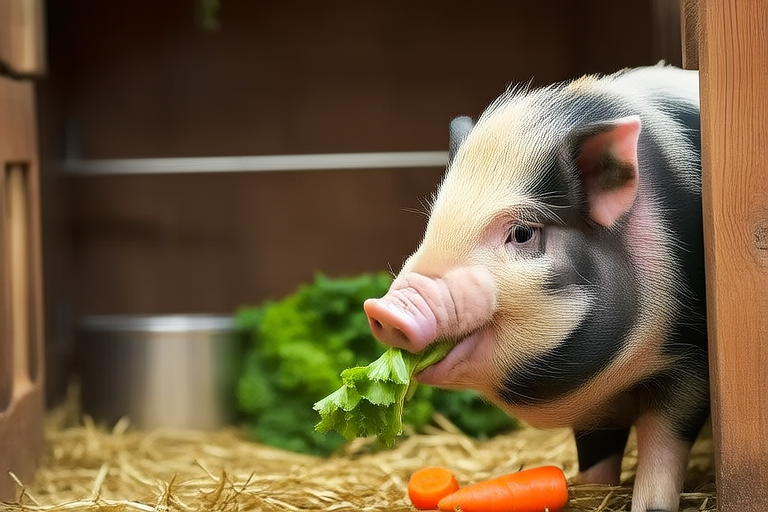From Diet Dilemmas to DIY Toys: Mastering Guinea Pig Care
Welcome to a comprehensive guide designed to help you master the art of caring for your beloved guinea pig. Whether you’re a first-time owner or an experienced caretaker, this article will cover essential aspects of guinea pig care, from diet and environment to health and enrichment.
Dietary Concerns: Nourishing Your Guinea Pig’s Needs
Guinea pigs have specific dietary requirements that are crucial for their health and well-being. Their diet should primarily consist of hay, fresh vegetables, and a limited amount of pellets. Hay, particularly Timothy hay, is vital as it aids digestion and helps wear down their continuously growing teeth.
Fresh vegetables such as carrots, bell peppers, and leafy greens like kale and spinach provide essential vitamins and minerals. However, some vegetables can be harmful if given in excess, such as iceberg lettuce which can cause digestive issues. Always introduce new foods gradually to monitor any adverse reactions.
Water is equally important; ensure a clean supply at all times. Bottles are preferable to bowls to prevent contamination and spills. Avoid feeding guinea pigs fruits excessively due to their high sugar content, but they can enjoy small portions occasionally as treats.
Creating a Healthy Living Environment
Adequate space is essential for a guinea pig’s physical and mental health. A cage should be large enough to allow movement and exploration. For a single guinea pig, a minimum of 7.5 square feet is recommended, while pairs require at least 10.8 square feet.
Selecting appropriate bedding is another critical aspect. Avoid cedar and pine shavings as they can irritate the respiratory system. Opt for paper-based bedding or fleece liners, which are safer and more comfortable. Regular cleaning is necessary to maintain hygiene and reduce odors.
Temperature control is also important. Guinea pigs thrive in temperatures between 65°F and 75°F. Extreme heat or cold can lead to stress or illness. Ensure the living area is well-ventilated and free from drafts.
Grooming Essentials: Keeping Your Guinea Pig Clean and Comfortable
Regular grooming helps maintain your guinea pig’s health and appearance. Nail trimming is essential as overgrown nails can cause discomfort and hinder movement. Use pet nail clippers and be cautious not to cut the quick, which contains blood vessels and nerves.
Teeth need regular attention too. Guinea pigs’ teeth grow continuously, so check them regularly for signs of overgrowth. Overgrown teeth can cause pain and difficulty eating. Provide chew toys to help wear down teeth naturally.
Bathing should be infrequent, typically once every few months, unless medically necessary. Excessive bathing can strip natural oils from their skin. Use warm water and gentle pet-safe shampoo. Dry thoroughly to prevent chills.
Health Care: Monitoring and Maintaining Your Guinea Pig’s Well-being
Guinea pigs are prone to certain health issues, including dental problems, respiratory infections, and diarrhea. Signs of distress include lethargy, loss of appetite, excessive salivation, and runny nose or eyes. Prompt action is crucial if you notice these symptoms.
Veterinary care is indispensable. Schedule routine check-ups and vaccinations. Be prepared to seek immediate veterinary assistance if your guinea pig exhibits severe symptoms. Early intervention can significantly improve outcomes.
Maintain a record of vaccinations, treatments, and any changes in behavior or health. This information is invaluable during consultations with veterinarians.
DIY Toys and Accessories: Stimulating Mental and Physical Health
To keep your guinea pig mentally and physically stimulated, consider creating DIY toys and accessories. Cardboard boxes and paper towel rolls make excellent tunnels and chew toys. They encourage exploration and chewing, which is essential for dental health.
PVC pipes can be used to create mazes or hideouts. These structures provide opportunities for hiding and playing, enriching their environment. Avoid using materials that could be toxic or cause choking hazards.
Interactive toys, such as treat-dispensing balls or puzzle feeders, challenge your guinea pig’s problem-solving skills. These activities promote cognitive development and reduce boredom.
In conclusion, mastering guinea pig care involves understanding their dietary needs, providing a suitable living environment, maintaining good grooming practices, monitoring their health, and offering stimulating toys and accessories. By following these guidelines, you’ll ensure your guinea pig leads a happy, healthy life.
